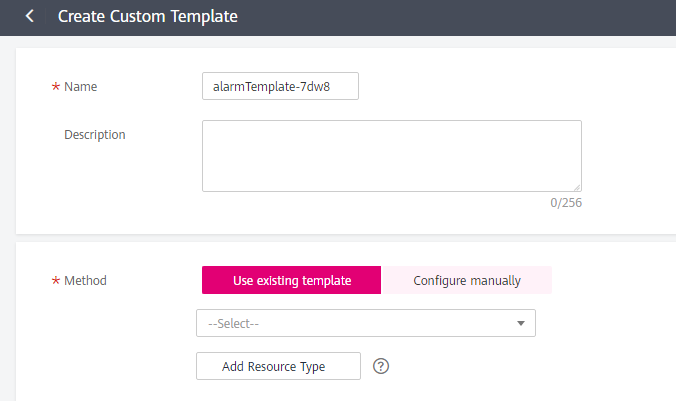Creating a Custom Template¶
Log in to the management console.
In the upper left corner, select a region and project.
Click Service List in the upper left corner and select Cloud Eye.
Choose Alarm Management > Alarm Templates.
Click Create Custom Template.
On the Create Custom Template page, configure parameters by referring to Table 1.

Figure 1 Create Custom Template¶
Table 1 Parameters¶ Parameter
Description
Name
Specifies the alarm rule name. The system generates a random name, which you can modify.
Example value: alarmTemplate-c6ft
Description
(Optional) Provides supplementary information about the custom template.
Alarm Type
You can select Metric or Event.
Method
You can select Using existing template or Configure manually.
Using existing template: Select an existing template for Template. The alarm rules in the template are automatically added.
Configure manually: You can customize alarm policies as required.
Add Resource Type
Specifies the type of the resource the alarm rule is created for.
Example value: Elastic Cloud Server
Note
A maximum of 50 resource types can be added for each service.
Click Create.